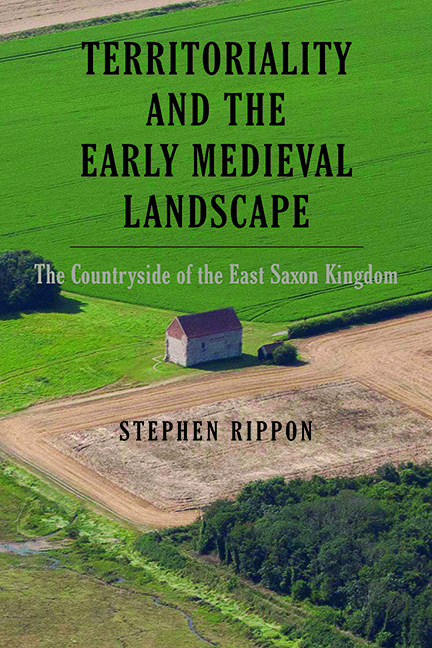Book contents
- Frontmatter
- Dedication
- Contents
- List of Illustrations
- List of tables
- List of Abbreviations
- Acknowledgements
- Glossary
- Preface
- Part I Background
- Part II The Early Folk Territories
- Part III Discussion and Analysis
- Appendix 1 Domesday Population Densities Across the ‘Rochford Peninsula’ Early Folk Territory
- Appendix 2 Sites Used in the Analysis of Animal Bone Assemblages
- Appendix 3 Sites Used in the Analysis of Charred Cereal Assemblages
- Bibliography
- Index
- Garden and Landscape History
Chapter 8 - A British Domain: The Central Claylands, Place-Names, Early Medieval Territorial Identity and the -Ingas Question
Published online by Cambridge University Press: 26 May 2022
- Frontmatter
- Dedication
- Contents
- List of Illustrations
- List of tables
- List of Abbreviations
- Acknowledgements
- Glossary
- Preface
- Part I Background
- Part II The Early Folk Territories
- Part III Discussion and Analysis
- Appendix 1 Domesday Population Densities Across the ‘Rochford Peninsula’ Early Folk Territory
- Appendix 2 Sites Used in the Analysis of Animal Bone Assemblages
- Appendix 3 Sites Used in the Analysis of Charred Cereal Assemblages
- Bibliography
- Index
- Garden and Landscape History
Summary
THE SOUTHERN AND EASTERN districts of the East Saxon kingdom appear to have seen extensive Anglo-Saxon immigration, whereas the inland areas present a very different picture. Despite a long history of antiquarian activity, extensive programmes of archaeological survey and excavation and the same level of metal detecting and reporting of finds to the PAS as seen elsewhere, very few Anglo-Saxon burials or Grubenhäuser have been discovered in the inland parts of the East Saxon kingdom. While traditionally it has been assumed that these claylands were sparsely settled and densely wooded, palaeoenvironmental analysis now shows that they were extensively cleared of woodland by the Roman period and that the landscape was intensively exploited for arable and pastoral farming. There is no evidence for a post-Roman woodland regeneration, and every reason to assume that a substantial native British population continued to live there. This chapter will explore the eastern parts of these inland districts – the fringes of the Boulder Clay where it is dissected by a series of river valleys – while Chapter 9 will examine the High Boulder Clay Plateau in northern Essex and south-western Suffolk, and Chapter 10 considers the western claylands in what was to become Hertfordshire.
THE CHELMER VALLEY
The Chelmer Valley and its tributaries appears to have been a single early folk territory that came to be divided into a series of ‘great estates’ referred to here as ‘greater Writtle’, ‘greater Easter’, ‘greater Waltham’, ‘greater Witham’ and ‘greater Dunmow’ (Figures 8.1–8.2). To the south lay the gravel-capped hills that marked the northern edges of the Fen District and Havering early folk territories, while to the east lay the Tiptree Hills that marked the western edge of Thurstable/ Winstree. ‘Greater Writtle’, in the south, occupied the Wid valley and is of particular interest as in Domesday it was dominated by a group of places with the folk name (G)ingā (from OE Gegingas). Great Waltham (OE wald + hām: ‘a forest estate centre’) was probably the original early folk territory centre, lying at the centre of the putative early folk territory and close to the royal burial ground at Broomfield.
- Type
- Chapter
- Information
- Territoriality and the Early Medieval LandscapeThe Countryside of the East Saxon Kingdom, pp. 171 - 196Publisher: Boydell & BrewerPrint publication year: 2022



